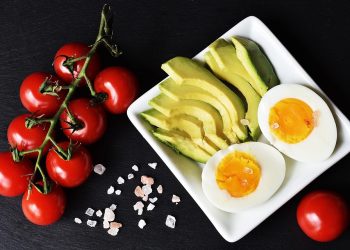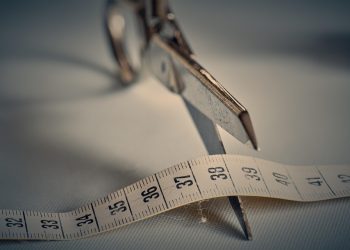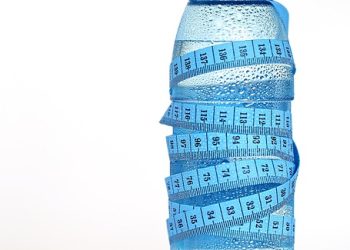Unveiling the Secrets to Effective Belly Fat Loss
Belly fat, also known as visceral fat, isn’t just a cosmetic concern. It’s a deep-seated type of fat that accumulates around your abdominal organs and poses significant health risks, including heart disease, type 2 diabetes, and certain cancers. If you’re looking to shed those extra inches around your waistline, you’re in the right place. This guide provides proven and effective strategies for belly fat loss that are sustainable and beneficial for your overall health.
Understanding Belly Fat: More Than Skin Deep
Before diving into the solutions, it’s crucial to understand what makes belly fat so problematic. Unlike subcutaneous fat, which lies just beneath the skin, visceral fat actively releases hormones and inflammatory substances. These substances disrupt normal metabolic processes and contribute to insulin resistance, increased cholesterol levels, and chronic inflammation. That’s why reducing belly fat is so vital for long-term well-being.
The Power of Diet: Fueling Your Body for Fat Loss
Your diet plays a pivotal role in belly fat reduction. It’s not just about counting calories; it’s about making smart food choices that support fat burning and overall health.
1. Prioritize Protein-Rich Foods
Protein is your ally in the fight against belly fat. It boosts metabolism, reduces appetite, and helps preserve muscle mass during weight loss. Studies have shown that individuals who consume higher amounts of protein tend to have less abdominal fat.
- Examples: Lean meats (chicken breast, turkey), fish (salmon, tuna), eggs, beans, lentils, tofu, Greek yogurt, and cottage cheese.
- Tip: Aim for protein in every meal to keep you feeling full and satisfied.
2. Embrace Healthy Fats
Don’t shy away from fats! Healthy fats, particularly monounsaturated and polyunsaturated fats, can actually help you lose belly fat. These fats promote satiety, improve insulin sensitivity, and reduce inflammation.
- Examples: Avocados, nuts (almonds, walnuts), seeds (chia seeds, flax seeds), olive oil, and fatty fish (salmon, mackerel).
- Tip: Incorporate small portions of healthy fats into your meals and snacks.
3. Load Up on Fiber
Fiber, especially soluble fiber, absorbs water and forms a gel-like substance in your gut, which slows down digestion and makes you feel fuller for longer. This can help reduce overall calorie intake and promote belly fat loss. Research indicates that increased soluble fiber intake is associated with reduced abdominal fat.
- Examples: Fruits (apples, berries), vegetables (broccoli, Brussels sprouts), oats, beans, and lentils.
- Tip: Gradually increase your fiber intake to avoid digestive discomfort.
4. Cut Back on Added Sugars and Refined Carbs
Sugary drinks, processed foods, and refined carbohydrates (white bread, pasta) are major contributors to belly fat accumulation. These foods are quickly digested and lead to rapid spikes in blood sugar and insulin levels, promoting fat storage, especially in the abdominal area.
- Tip: Replace sugary drinks with water, unsweetened tea, or sparkling water.
- Tip: Opt for whole grains like brown rice, quinoa, and whole-wheat bread instead of refined carbs.
- Tip: Read food labels carefully and be mindful of hidden sugars in processed foods.
5. Mindful Eating: Tune In to Your Body’s Signals
Eating mindfully involves paying attention to your body’s hunger and fullness cues. This can help you avoid overeating and make healthier food choices. Eat slowly, savor each bite, and be present during your meals.
- Tip: Put away distractions like your phone or television while eating.
- Tip: Stop eating when you feel satisfied, not stuffed.
The Importance of Exercise: Moving Your Way to a Flatter Stomach
While diet is crucial, exercise is equally important for belly fat loss. It helps burn calories, boost metabolism, and improve insulin sensitivity.
1. Cardio for Calorie Burning
Cardiovascular exercise, such as running, swimming, cycling, or brisk walking, is an effective way to burn calories and reduce overall body fat, including belly fat. Aim for at least 150 minutes of moderate-intensity or 75 minutes of vigorous-intensity cardio per week.
- Examples: Running, swimming, cycling, brisk walking, dancing, HIIT (High-Intensity Interval Training).
- Tip: Find an activity you enjoy to make exercise more sustainable.
2. Strength Training for Muscle Building
Strength training helps build muscle mass, which boosts your metabolism and helps you burn more calories even when you’re at rest. It also improves insulin sensitivity and helps reduce abdominal fat. Focus on compound exercises that work multiple muscle groups simultaneously.
- Examples: Squats, lunges, push-ups, rows, planks, deadlifts.
- Tip: Aim for strength training at least two to three times per week.
3. HIIT: The Time-Efficient Fat Burner
High-intensity interval training (HIIT) involves short bursts of intense exercise followed by brief recovery periods. HIIT is highly effective for burning calories and reducing belly fat in a shorter amount of time compared to traditional cardio. Studies show HIIT is more effective for reducing abdominal fat compared to steady state cardio.
- Example: Sprint for 30 seconds, followed by a 30-second rest, repeated for 15-20 minutes.
- Tip: Consult with a healthcare professional before starting HIIT if you have any underlying health conditions.
Beyond Diet and Exercise: Other Lifestyle Factors
Diet and exercise are the cornerstones of belly fat loss, but other lifestyle factors can also play a significant role.
1. Prioritize Sleep
Lack of sleep can disrupt hormone levels, increase appetite, and promote belly fat accumulation. Aim for 7-8 hours of quality sleep each night.
- Tip: Establish a regular sleep schedule and create a relaxing bedtime routine.
2. Manage Stress
Chronic stress can lead to increased levels of cortisol, a stress hormone that promotes belly fat storage. Find healthy ways to manage stress, such as meditation, yoga, or spending time in nature.
- Tip: Practice mindfulness and relaxation techniques regularly.
3. Stay Hydrated
Drinking plenty of water can help you feel full, boost metabolism, and promote fat burning. Aim for at least 8 glasses of water per day.
- Tip: Carry a water bottle with you and sip on it throughout the day.
4. Limit Alcohol Consumption
Alcohol can contribute to belly fat accumulation, especially when consumed in excess. It’s high in calories and can interfere with fat metabolism. If you choose to drink alcohol, do so in moderation.
- Tip: Choose lower-calorie alcoholic beverages and avoid sugary mixers.
Tracking Your Progress: Monitoring Your Success
Tracking your progress can help you stay motivated and identify areas where you need to make adjustments. Here are a few ways to monitor your success:
- Measure your waist circumference: Use a tape measure to track the circumference of your waist at the level of your belly button.
- Take progress photos: Take photos of yourself every few weeks to visually track your progress.
- Track your weight: Weigh yourself regularly, but don’t obsess over the numbers.
- Monitor your energy levels and mood: Pay attention to how you feel overall.
Setting Realistic Goals: A Marathon, Not a Sprint
Losing belly fat takes time and effort. It’s important to set realistic goals and be patient with yourself. Focus on making gradual, sustainable changes to your diet and lifestyle. Avoid fad diets and quick fixes, as they are often ineffective and can even be harmful.
Conclusion: A Holistic Approach to a Healthier You
Losing belly fat is not just about aesthetics; it’s about improving your overall health and well-being. By adopting a holistic approach that encompasses a healthy diet, regular exercise, stress management, and adequate sleep, you can effectively reduce belly fat and achieve a healthier, happier you. Remember that consistency is key, and small changes can make a big difference over time. Consult with a healthcare professional or registered dietitian for personalized guidance and support.
Frequently Asked Questions (FAQs)
Q: How long does it take to lose belly fat?
A: The time it takes to lose belly fat varies depending on individual factors such as genetics, metabolism, and lifestyle. However, with consistent effort and a healthy approach, you can start seeing noticeable results in a few weeks or months.
Q: Can I target belly fat specifically?
A: While you can’t spot-reduce fat, focusing on overall fat loss through diet and exercise will naturally lead to a reduction in belly fat. Strength training can help tone abdominal muscles, making your stomach appear flatter.
Q: Are there any supplements that can help with belly fat loss?
A: Some supplements, such as green tea extract and conjugated linoleic acid (CLA), may have a modest effect on fat loss. However, supplements are not a substitute for a healthy diet and exercise. It’s important to talk to your doctor before taking any supplements.
Q: What are some healthy snack options for belly fat loss?
A: Healthy snack options include fruits (berries, apples), vegetables (carrots, celery), nuts (almonds, walnuts), seeds (chia seeds, flax seeds), Greek yogurt, and hard-boiled eggs.
Q: Is it possible to lose belly fat after menopause?
A: Yes, it’s possible to lose belly fat after menopause, although it may be more challenging due to hormonal changes. Focus on maintaining a healthy diet, engaging in regular exercise, and managing stress levels.
Q: How important is sleep for belly fat loss?
A: Sleep is extremely important for belly fat loss. Lack of sleep can disrupt hormone levels, increase appetite, and promote belly fat accumulation. Aim for 7-8 hours of quality sleep each night.
Q: What kind of cardio is best for burning belly fat?
A: Any type of cardio can help burn belly fat, but HIIT (high-intensity interval training) has been shown to be particularly effective. Choose an activity you enjoy and can stick to consistently.
Q: Can stress cause belly fat?
A: Yes, chronic stress can lead to increased levels of cortisol, a stress hormone that promotes belly fat storage. Find healthy ways to manage stress, such as meditation, yoga, or spending time in nature.
Q: How much fiber should I eat per day to help lose belly fat?
A: Aim for at least 25-30 grams of fiber per day. Good sources of fiber include fruits, vegetables, whole grains, and legumes.
Q: What is the role of insulin resistance in belly fat accumulation?
A: Insulin resistance occurs when your body’s cells don’t respond properly to insulin, a hormone that regulates blood sugar levels. This can lead to increased blood sugar levels and the storage of excess sugar as fat, particularly in the abdominal area. Diet and exercise can help improve insulin sensitivity.












